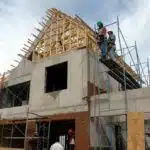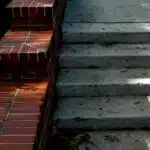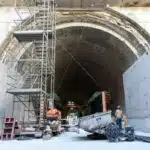Concrete is one of the most widely used construction materials in the world. It’s strong, durable, and relatively easy to work with. Whether you’re building a new home or simply adding an extension to your existing property, knowing how much concrete you need is essential. Accurately calculating the amount of concrete required for a project can save time, money and effort.
As a civil engineer, I have seen many projects that have been delayed due to incorrect calculations of concrete requirements. Inaccurate estimations can lead to delays in the construction process, as well as wasted resources and increased costs. Therefore, it is crucial for constructors to accurately calculate the amount of concrete they will need before starting a project. In this article, we will discuss some simple steps that can be used to determine how much concrete is needed for any given project. By following these guidelines, even those without a background in engineering can easily calculate their concrete requirements and avoid costly mistakes in their projects.
Understanding The Importance Of Accurate Concrete Calculations
Precision is essential when it comes to concrete calculations. This is because the wrong amount of concrete can lead to increased costs, project delays, and even structural issues. Therefore, it is crucial to accurately estimate the amount of concrete needed for a project.
Inaccurate cost estimation can cause financial setbacks that may require additional funds, which can be challenging for individuals or companies with limited budgets. The importance of precision in calculating concrete requirements cannot be overstated. If you underestimate the amount of concrete required, you will have to order more material on short notice, which can increase transportation costs and delay your project.
To ensure cost estimation accuracy and prevent any potential issues during the construction process, various factors must be considered when determining the amount of concrete required. These factors include the shape and dimensions of the project area, as well as the thickness of the slab or footing that needs to be poured. By taking these details into account during calculations, you can achieve accurate estimates that help save time and money while ensuring structural integrity.
With an understanding of why accurate calculations matter in concrete projects established, the next step is determining the dimensions of your project.
Determining The Dimensions Of Your Project
Calculating dimensions is the first step in determining how much concrete you need for your project. Before you begin, it’s essential to measure accurately the length, width, and height of the area that needs to be filled with concrete. Make sure to take into account any irregularities or curves in the surface of your project.
Once you have measured accurately, calculate the total area of your project by multiplying the length by the width. If your project has multiple levels or different heights, measure each level separately and add them together to get a total volume. Remember to multiply each level’s area by its corresponding height.
After determining the dimensions of your project, you are ready to move on to calculating the volume of concrete needed. This calculation will depend on several factors, such as the thickness of the concrete layer and any additional materials used in construction. In the next section, we will discuss how to calculate precisely how much concrete is required for a successful and durable construction project.
Calculating The Volume Of Concrete Needed
After determining the dimensions of your project, the next step is to calculate the volume of concrete needed. To do this, it is crucial to ensure calculating accuracy and use appropriate measuring techniques. Concrete volume can be calculated by multiplying the length, width, and height of the surface area you want to fill with concrete.
When calculating the volume of concrete needed, it is essential to account for any voids in the structure that require filling. These spaces must be factored into your calculations as they will affect the total amount of concrete required. Additionally, it is important to consider factors such as weather conditions and any potential changes to your project’s design that may impact your calculations.
To accurately determine how much concrete you need for your project, you must also understand concrete mix ratios. This ratio refers to the proportion of components used in making concrete and varies depending on the strength or durability required for a specific application. Understanding mix ratios will help you choose the right type of concrete for your project and ensure that you are using an appropriate mix that meets all necessary specifications. By following these steps and taking careful measurements, you can determine exactly how much concrete you need for a successful project without wasting valuable time or resources.
Understanding Concrete Mix Ratios
Concrete mix ratios are an essential aspect of any concrete project. Understanding the right ratio to use ensures that the resulting concrete has the strength and durability required for its intended use. A common mix ratio is 1:2:3, which means one part cement, two parts sand, and three parts gravel by volume.
Understanding concrete curing is critical for ensuring that the concrete mixture sets correctly. Curing refers to the process of keeping the concrete moist and at a stable temperature after it has been poured to allow it to harden fully. This process can take several days or even weeks depending on factors such as humidity levels and temperature. Proper curing techniques can significantly improve the strength and durability of your final product.
Importance of proper mixing techniques cannot be overstated when working with concrete. Mixing should be done thoroughly using a proper mixing tool such as a mixer or drill with a paddle attachment, ensuring that all materials are evenly distributed throughout the mixture. Skipping this step or not doing it correctly could result in weak spots or cracks in your finished product, leading to costly repairs down the line.
It is crucial to understand how much concrete you need before starting your project; however, it is also important to account for waste and overflow during pouring. Adjusting for waste and overflow will ensure that you have enough material on hand, even if some gets spilled or wasted during pouring. By following these tips on understanding mix ratios, proper curing techniques, and mixing procedures, you can create high-quality concrete structures that will stand up to time and wear for years to come.
Adjusting For Waste And Overflow
Understanding concrete mix ratios is only the first step in calculating how much concrete you need for a project. To ensure that you have enough concrete, you must also take into account potential waste and overflow. Reducing waste and minimizing overflow will not only save you money, but it will also help reduce environmental impact.
One way to reduce waste is by accurately measuring the amount of concrete needed for each section of your project. This can be achieved by breaking down the project into smaller sections and calculating the volume of each section separately. By doing this, you can minimize the amount of leftover concrete at the end of your project. Additionally, using forms or molds to contain the poured concrete can help prevent overflow and minimize cleanup.
Another method to minimize waste is to use online calculators and tools. These tools allow you to input specific project dimensions and determine exactly how much concrete is needed, taking into account factors such as depth, width, and length. This precise calculation helps eliminate guesswork and reduces unnecessary purchasing of extra materials.
Overall, reducing waste and minimizing overflow are crucial steps in calculating how much concrete you need for your project. By accurately measuring each section and utilizing online calculators, you can ensure that you have just enough material without excess waste or costly over-purchasing.
Using Online Calculators And Tools
- Online calculators and tools can be extremely beneficial for civil engineers, as they can quickly and easily perform calculations and analyze data with minimal effort.
- Utilizing online calculators and tools can help in calculating the amount of concrete needed for any given project, saving time and resources.
- Furthermore, online calculators and tools can help to ensure accuracy and consistency in the calculations, thereby reducing the potential for errors.
- By using online calculators and tools, civil engineers can quickly and accurately calculate the amount of concrete needed for a project and make informed decisions.
Benefits Of Online Calculators
As civil engineers, we always aim to deliver the best possible results for our clients. One way to achieve this is by using online calculators and tools that aid us in our work. The benefits of these online calculators are numerous, and they can greatly enhance the accuracy and efficiency of our calculations.
One of the advantages of using online calculators is their speed. With a few clicks, an engineer can input data into a calculator and receive accurate results in seconds. This saves valuable time that can be used for other important tasks. Additionally, many online calculators are free to use, which reduces the cost of purchasing expensive software or hiring additional staff.
Another benefit of online calculators is their versatility. They can perform a wide range of calculations, from basic arithmetic to complex equations that require advanced mathematics knowledge. Engineers can also choose from a variety of specialized calculators that cater to specific fields such as structural engineering or geotechnical engineering.
In conclusion, the use of online calculators offers numerous benefits for civil engineers. The speed, versatility, and cost-effectiveness of these tools make them an essential part of any engineer’s toolkit. By utilizing these resources, we can ensure accurate and efficient results for our clients while saving valuable time and resources.
Using Online Tools For Concrete Calculations
As a civil engineer, the use of online calculators and tools has become a standard practice in our field. These tools have proven to be reliable, accurate, and efficient in assisting us in various calculations. However, not all online calculators are created equal as they may have limitations that could affect the accuracy and reliability of the results. Thus, it is important for engineers to carefully choose the right tools for specific tasks.
One area where online tools can be particularly useful is with concrete calculations. Concrete is a fundamental material used in many construction projects and requires precise measurements for optimal performance. Online calculators provide accurate results for calculating concrete mixtures, slab thickness, and other factors that impact its strength and durability. By using these tools, engineers can ensure that the concrete used in their projects meets the required standards.
Despite the benefits of using online tools for concrete calculations, there are also limitations to consider. These calculators rely on input data provided by the user, which means that inaccuracies or errors could lead to incorrect results. Additionally, some complex calculations may require manual verification by an experienced engineer to ensure accuracy. Therefore, while online calculators offer significant advantages in terms of speed and efficiency when used correctly, it is crucial to exercise caution and expertise when applying them to critical tasks such as designing concrete structures.
Accounting For Different Shapes And Sizes
When calculating the amount of concrete needed for a project, it is important to consider the different shapes and sizes that may be present. Irregular shapes and curved surfaces can complicate the process, but with proper measurement techniques, accurate estimates can still be obtained.
One approach to calculating concrete needs for irregular shapes involves dividing the shape into smaller sections that can be measured and added together. This may require breaking down complex shapes into simpler forms such as rectangular or triangular sections. Careful attention should also be given to any protrusions or indentations in the surface, as these will affect the total volume of concrete needed.
For curved surfaces, specialized tools such as contour gauges or flexible rulers may be necessary to obtain accurate measurements. It is also important to consider the thickness of the concrete being applied, as this will impact both the amount needed and the overall strength of the finished structure. By taking these factors into account, engineers can ensure that their calculations are precise and that they have sufficient materials on hand for successful completion of their project.
- When estimating for irregular shapes, divide them into smaller sections
- Pay attention to any protrusions or indentations that will affect volume
- Use specialized tools like contour gauges or flexible rulers for curved surfaces
- Consider thickness when applying concrete
- Ensure calculations are precise to avoid material shortages
In order to ensure structural integrity and durability over time, it is also important to factor in rebar and mesh reinforcement during the estimation process. This additional material helps distribute weight more evenly across a structure and prevents cracking or failure due to shifting ground or other environmental factors. Depending on the size and scope of a project, careful planning may be required when reinforcing with rebar or mesh in order to optimize cost-effectiveness while maintaining safety standards.
Transition: Now that we understand how different shapes and sizes impact our calculations, let’s delve further into factoring in rebar and mesh reinforcement for optimal structural integrity.
Factoring In Rebar And Mesh
Accounting for different shapes and sizes is only one aspect of calculating the amount of concrete required for a project. Another crucial factor in determining the amount of concrete needed is factoring in rebar placement and mesh reinforcement. These elements are essential for providing additional strength and durability to concrete structures, especially those that will be exposed to significant loads or stresses.
Rebar placement refers to the positioning of steel bars within a concrete structure. The steel bars serve as reinforcement by adding tensile strength to the concrete, which is necessary for withstanding bending and twisting forces. The size and spacing of rebar depend on the type of structure being constructed, as well as the load capacity it needs to support. In most cases, rebar needs to be placed in a specific pattern or layout within the structural frame.
Mesh reinforcement is another critical element in ensuring the durability and longevity of a concrete structure. It involves placing wire panels or sheets within the concrete mix before pouring it into place. The mesh provides additional support by evenly distributing any stress or tension that may occur within the structure, preventing cracks from forming over time. Mesh reinforcement can also aid in controlling shrinkage cracks, which can occur during drying or curing processes.
When considering the time and labor involved in incorporating rebar placement and mesh reinforcement into a project’s design, it may seem like an unnecessary expense. However, these elements are vital for ensuring that your structure meets building codes, safety regulations, and long-term performance expectations. By taking this extra step during construction planning, you can rest assured that your project will be durable enough to withstand years of use without requiring costly repairs or replacements down the road.
Considering The Time And Labor Involved
Have you considered the time and labor required for your concrete project? While estimating expenses is important, it’s equally crucial to plan out the time and labor involved. Without proper planning, your project can easily go over budget and extend beyond its deadline.
Managing time is a key factor in keeping your construction project on track. Consider factors such as weather conditions, site accessibility, and equipment availability when creating a timeline. Additionally, it’s important to account for any unexpected delays that may occur during the construction process. By carefully planning out your schedule, you can avoid costly mistakes and ensure that your project stays on track.
In addition to managing time, it’s also important to budget for materials and labor costs. These expenses can add up quickly if not properly planned for. Research local pricing for materials such as concrete, aggregate, and reinforcement steel before starting your project. Additionally, consider the cost of hiring experienced professionals to complete certain aspects of the job. By creating a detailed budget that accounts for both material and labor costs, you can ensure that your project stays within budget and is completed on time.
Budgeting For Materials And Labor Costs
When budgeting for a construction project, it is crucial to consider the costs of both materials and labor. Concrete is one of the most common building materials used in construction, but the cost of concrete can vary depending on various factors such as location, quality, and quantity needed. Comparing material costs from various suppliers can help you find the best price for your project.
Negotiating with suppliers can also help reduce material costs. Many suppliers are willing to negotiate prices based on the quantity of materials purchased or if you are a repeat customer. Additionally, purchasing materials in bulk can often result in significant savings. It is important to communicate your needs clearly and be open to exploring different options.
When it comes to labor costs, hiring professional concrete contractors may be more expensive upfront but can save money in the long run. Professional contractors have experience and expertise that can ensure the project is completed efficiently and effectively, reducing the risk of costly mistakes or delays. Furthermore, professional contractors often have access to specialized tools and equipment that can help save time and money during construction.
Transition: Now that we have discussed how to budget for materials and labor costs when working with concrete, let’s dive into the next step – hiring professional concrete contractors.
Hiring Professional Concrete Contractors
Budgeting for materials and labor costs is an essential step in any construction project. However, it’s equally important to calculate how much concrete you need for the job. This seemingly simple task can be daunting and requires careful consideration of various factors such as the size of the area, thickness of the slab, and type of concrete mix required.
By hiring professional concrete contractors, you can benefit from their expertise in calculating how much concrete you need. They have years of experience working on projects similar to yours and can provide accurate estimates based on your specific requirements. Additionally, they can help you choose the right type of concrete mix that’s best suited for your project needs.
Despite the benefits of hiring professionals, there are some drawbacks to consider. Hiring a contractor may increase your overall project cost as they charge for their services. Moreover, finding reputable contractors may pose a challenge as not all contractors have the same level of expertise or integrity. It’s crucial to do your research and ensure that you hire a reliable contractor with a proven track record.
| Type of Concrete Mix | Uses | Strength (PSI) | Price per Yard |
|---|---|---|---|
| Standard | Sidewalks, Driveways | 3000-4000 | $100-$150 |
| High-Strength | Foundations, Retaining Walls | 5000+ | $200-$250 |
| Fiber-Reinforced | Industrial Floors, Pavements | 3000-6000+ | $150-$200 |
In conclusion, while it’s possible to calculate how much concrete you need on your own, hiring professional contractors has its benefits. They can offer expert advice and provide accurate estimates tailored to your unique needs. However, it’s essential to carefully evaluate potential contractors to ensure that you work with someone who is reputable and trustworthy. In the next section, we’ll discuss ordering concrete from a supplier – another critical aspect when it comes to completing your project efficiently.
Ordering Concrete From A Supplier
When it comes to ordering concrete from a supplier, there are several delivery options available. It is essential to consider the location of the site and the amount of concrete required when selecting a delivery method. Some suppliers offer ready-mix concrete, which can be delivered via a mixer truck. This option is suitable for larger construction projects that require significant amounts of concrete. Other suppliers may offer volumetric mixers, which allow for on-site mixing and are ideal for smaller projects.
Pricing comparisons can also help determine which supplier to select when ordering concrete. Different suppliers may have varying prices depending on factors such as the type of concrete and delivery method selected. It is crucial to compare pricing from multiple suppliers before making a final decision. Additionally, some suppliers may offer discounts or promotions that could help to reduce costs.
When ordering concrete from a supplier, it is important to ensure that the site is adequately prepared for pouring. This includes clearing the area of any debris or obstacles and ensuring proper drainage systems are in place. The site should also be levelled and compacted to ensure an even surface for pouring the concrete. Adequate preparation can help prevent issues such as uneven settling or cracking in the finished product, ensuring maximum durability and longevity.
Transitioning into the subsequent section about preparing the site for pouring: Once the site has been thoroughly prepared, it is time to move onto the next step, which involves setting up forms and reinforcing steel bars (rebars).
Preparing The Site For Pouring
After ordering the required amount of concrete, the next step in the process is to prepare the site for pouring. One crucial factor to consider during preparation is the excavation depth that should be determined by evaluating the soil type and stability in the area. The excavation depth will also depend on the size and type of structure being built, as well as any additional reinforcement needed. A deeper excavation may be required for larger structures or those constructed in unstable soil conditions.
Another important aspect of site preparation is surface leveling. This involves removing any debris, vegetation, or uneven surfaces that may hinder proper concrete placement and curing. A level surface ensures that concrete is poured evenly and uniformly across the entire area without any potential weak spots or low areas that could cause issues later on.
Properly preparing the site for pouring will ultimately determine how strong and durable a structure’s foundation will be. By ensuring an appropriate excavation depth, along with a smooth and level surface, it can help prevent cracking or settling down the line. Next, we’ll discuss how to pour and finish concrete correctly to ensure a successful project outcome.
Pouring And Finishing The Concrete
To ensure that your concrete project is successful, it is important to properly pour and finish the concrete. This begins with properly preparing the surface on which the concrete will be poured. The surface should be level and free of any debris or contaminants. Once this is done, forms can be constructed to define the shape and size of the concrete area.
When it comes time to pour the concrete, it is important to have calculated how much concrete you need beforehand. This can be done by using a simple formula that takes into account the length, width, and depth of the area you wish to cover. It is also important to mix the concrete thoroughly and apply it evenly across the surface. After pouring, it should be smoothed out with a trowel or other tool to ensure an even surface.
Once the concrete has been poured, it is important to allow for proper curing time before applying any surface treatments. Curing time can vary depending on factors such as temperature and humidity, but typically takes around 28 days. Surface treatments such as sealants or decorative finishes can then be applied if desired. By following these steps, you can ensure that your concrete project will not only look great, but also last for years to come.
Transition: To maintain your newly-poured concrete over time and avoid costly repairs in the future, there are several steps you can take.
Maintaining And Repairing Your Concrete Over Time
Maintaining and repairing your concrete over time is essential to ensure its longevity and durability. One of the most common mistakes people make is neglecting minor cracks or damages, which can eventually lead to more significant problems and costly repairs. Therefore, it’s crucial to inspect your concrete regularly, especially after harsh weather conditions or heavy usage.
DIY tips for maintaining your concrete include cleaning it regularly with a pressure washer or mild detergent solution, sealing it every few years to prevent moisture damage, and filling any cracks or holes promptly with an appropriate filler material. It’s also important to avoid using de-icing chemicals on your concrete during winter months as they can cause surface damage.
In summary, proper maintenance and timely repairs are crucial for extending the life of your concrete. By being vigilant and proactive, you can save money on costly repairs in the long run. Remember to inspect your concrete regularly, avoid common mistakes such as neglecting minor damages, and follow DIY tips for keeping it in top condition.
Conclusion
Accurate calculations are essential for any construction project, especially when it comes to calculating the amount of concrete required. The process involves determining the dimensions of your project, calculating the volume of concrete needed, adjusting for waste and overflow, ordering from a supplier, and preparing the site for pouring.
It is crucial to understand that miscalculations can lead to costly mistakes and delays in construction. According to a study by the National Ready Mixed Concrete Association, an estimated 10% of all concrete used in construction projects is wasted due to inaccurate calculations and poor planning. This statistic highlights the importance of precise measurements and careful planning when it comes to concrete projects.
As civil engineers, we must prioritize accuracy in our calculations to ensure successful completion of projects within budget and on schedule. By following the steps outlined above and taking into account potential waste and overflow, we can minimize unnecessary expenses while maintaining high-quality standards. With proper planning and attention to detail, we can avoid costly mistakes and ensure that our concrete projects stand up to the test of time.
Image Credits
- “Hewlett Packard HP41CV Calculator Teardown” by eevblog (featured)




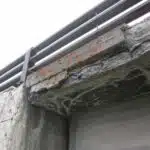
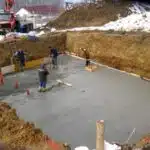
![Calculating How Much Stone Dust You Need 6 [Blog Post]Stone Dust © Oxfam Australia](https://green-life.blog/wp-content/uploads/2023/05/GdZVzgTqPhjq-150x150.jpg.webp)
